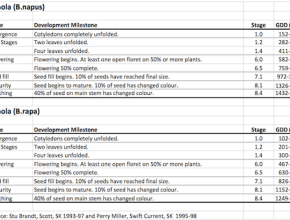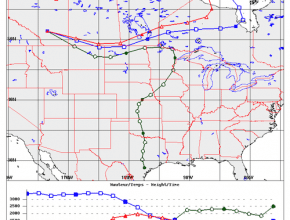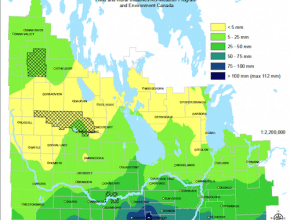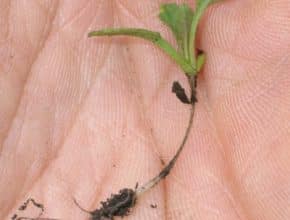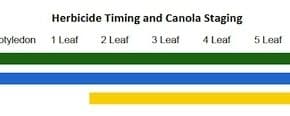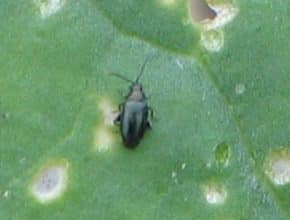Seeding progressed rapidly in the past week across most of the Prairies. Excess dry conditions in some areas have growers wondering whether to seed deeper to reach moisture, and excess rain in others has growers wondering how long seed and seedlings can survive in waterlogged conditions. Flea beetles are present in some fields. Canola can tolerate 25% to 50% defoliation…
May 23, 2013 - Issue 8
-
-
-
-
High winds can blow seeds and seedlings right out of the ground, especially if top soil is dry. If the field is not yet seeded, growers may want to seed a little deeper if topsoil is dry and high winds are still coming…
-
In a situation where soils are dry in top 1-2” and seeding is delayed to late May or June, the shallow seeding recommendation for canola is up for debate. Seeding as deep as 2” to chase moisture may be preferable to leaving canola stranded in half an inch of dust…
-
Sprouting seeds are vulnerable to flooding/ponding damage as they require oxygen for respiration. The longer it takes for emergence after germination, the greater the chance of stand loss. Saturated soils may also retard or prevent germination because oxygen concentration is too low around the seed. If no germination has occurred, seeds can be cut in half to determine if turgor…
-
The week after seeding is a good time to dig up seeds and seedlings to check for rots and blights. Disease damaged seed and seedlings die quickly, and may be gone within a few days, which is why this timing is important to an accurate diagnosis. For the first 21 days after emergence, scout regularly for flea beetles, cutworms, weeds,…
-
Past research has demonstrated an advantage of 3 bu./ac. for controlling weeds at the 1-2 leaf stage of canola versus the 3-4 leaf stage, and a 7 bu./ac. advantage versus 6-7 leaf. At $12 per bushel, that’s $36 to $84 per acre more profit with no added cost. These numbers will be even higher if a preseed burnoff was not…
-


